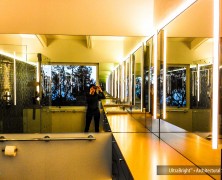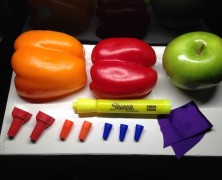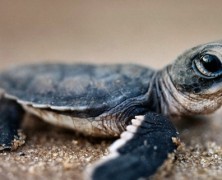We take pride in helping customers complete all sorts of LED lighting installations. From restaurants and hotels to basic kitchen redesigns, each project has a unique story. For this reason, we are always eager to see photographs of completed projects using Flexfire LEDs strip lights. To this end, we encourage you to participate in the Flexfire LEDs Spring 2014 Photo Contest. Every Entry Wins! We now have two separate contests, and everyone who submits a qualifying entry will win! Our standard photo contest awards prizes in each of three categories, while our new “Step-by-Step Tutorial” contest rewards those who share thorough details of their projects. Furthermore, everyone who sends us a qualifying submission for either contest will receive a coupon for $30 off any reel of Flexfire LEDs strip lights. Below you’ll find details for each of our two contests. Contest 1: Photo Contest Send us a high-resolution photograph of your completed project using Flexfire LEDs products and we’ll reward you with a coupon for $30 off any reel of Flexfire LEDs strip lights. One winner will be selected in each of these three categories: 1. Best Residential Installation (kitchens, bedrooms, bathrooms, basically anywhere in your home) 2. Best Commercial Installation (retail stores, bars/restaurants, offices, signage, etc.) 3. Best Hobby/Creative Installation (past examples include terrariums, Halloween costumes, and a flying wingsuit!) The winning project in each category will receive a FREE reel of Flexfire LEDs ColorBright strip lights. Again, please be sure to send us a high-resolution photograph, as blurred, low-quality images will not be considered. Contest 2: Step-by-Step Tutorial Contest Many of our customers see these great project photos and wonder, “How did they do that?” We’d love to share your step-by-step installation story on our blog. Everyone who submits a qualifying “Step-By-Step Tutorial” entry will receive a...
Why You Should Care About CRI...
posted by Flexfire LEDs
CRI, or Color Rendering Index, is the latest buzzword in consumer lighting circles. With the current phasing out of traditional incandescent bulbs, many consumers are scrambling to understand their remaining choices. Savvy lighting manufacturers understand this, and have invested a great deal in educating customers about things like color temperature, lumens, and now CRI. So how does CRI work? Basically, take a light bulb and shine it onto a few bright, colorful items. How natural do their colors look? Color Rendering Index is a mathematical measure of this, where a light source is tested and given a score from 0-100. Any light bulb, tube, or strip that measures greater than 90 is typically considered “High CRI”, and thus very effective at rendering natural-looking color at a given color temperature. As a point of reference, many of the fluorescent or other types of lighting that people consider “harsh” or “artificial” measure in the 50-70 CRI range. Take a look at the two photos above. In the first photo, under lights rated at CRI 57, the orange bell pepper has lost much of its natural color, appearing almost yellow. Similarly, the green apple, red bell pepper, and yellow marker appear dull and lifeless. In the second photo, under CRI 93 lighting, the colors are much more alive in comparison, down to the white board on which everything is placed. Testing for CRI requires special machinery designed specifically for this purpose. During this test, a lamp is shone onto eight different colors (or “R values”), termed R1 through R8. The lamp receives a score from 0-100 for each color, based on how natural the color is rendered in comparison with how the color looks under a “perfect” or “reference” light source at the same color temperature...
LED Lighting Installation Is Helping Save Baby Sea Turtles...
posted by Flexfire LEDs
A unique project in coastal Florida uses LED lighting to help young hatchlings avoid danger and find their way to the ocean. Led by the Sea Turtle Conservancy, the installation addresses a long-standing problem that has grown steadily worse over the past 30 years. This latest project joins human-centric and grow lights on an expanding list of fascinating biologic applications of LED lighting. As first reported in Scientific American, the installation specifically helps new sea turtle hatchlings find a direct path to ocean safety. Hatchlings typically emerge from their eggs in late afternoon or early evening, crawling up through sand from about 50 centimeters below the beach surface. They instinctively head for the soft lights on the ocean horizon, guided by moon and star reflections on the water. But this natural light is now eclipsed by the hotels, homes and restaurants that dominate today’s beachfront zones. The young turtles quickly become disoriented, often heading in the wrong direction. It’s a fatal mistake, as they can easily die of dehydration, get run over by cars or be eaten by inland predators. The situation is a significant threat to the survival of at least three endangered sea turtle species. Florida is home to 90 percent of sea turtle nesting in the U.S., and it is estimated that tens of thousands of hatchlings are lost each year. The Sea Turtle Conservancy (STC) has thus targeted this coastal area for a series of lighting retrofits aimed at reducing disorientation. So far, numbers prove that this LED lighting installation is helping save baby sea turtles. The retrofit has other benefits as well: LED lighting uses a fraction of the energy consumed by other lighting technologies, and lasts for several years with little to no maintenance costs. Further, residents and business...








